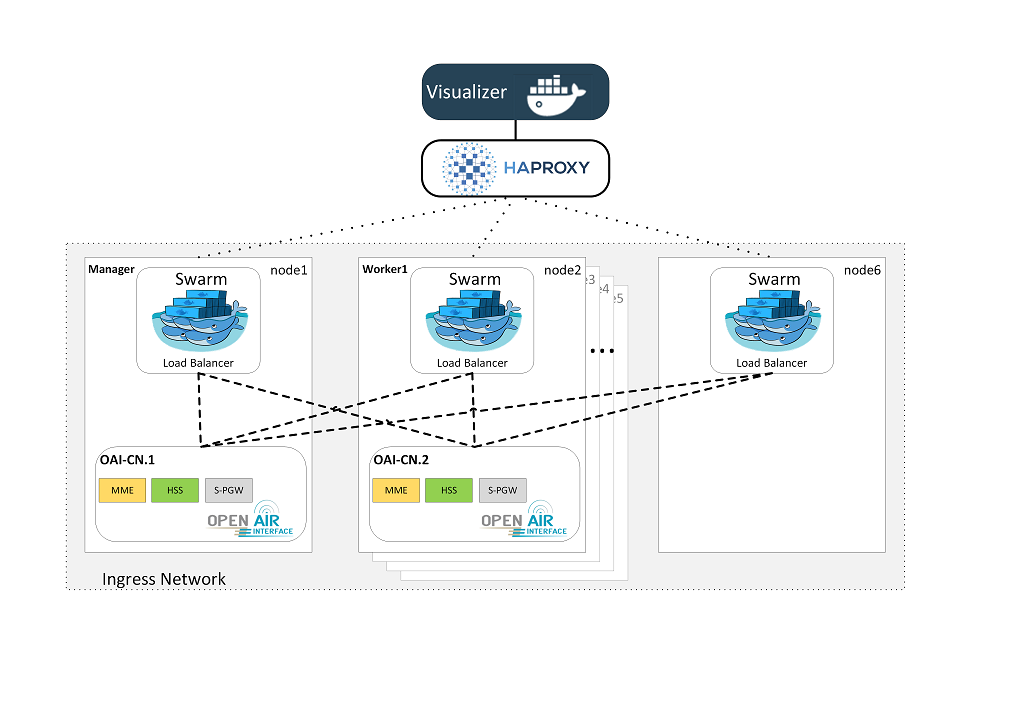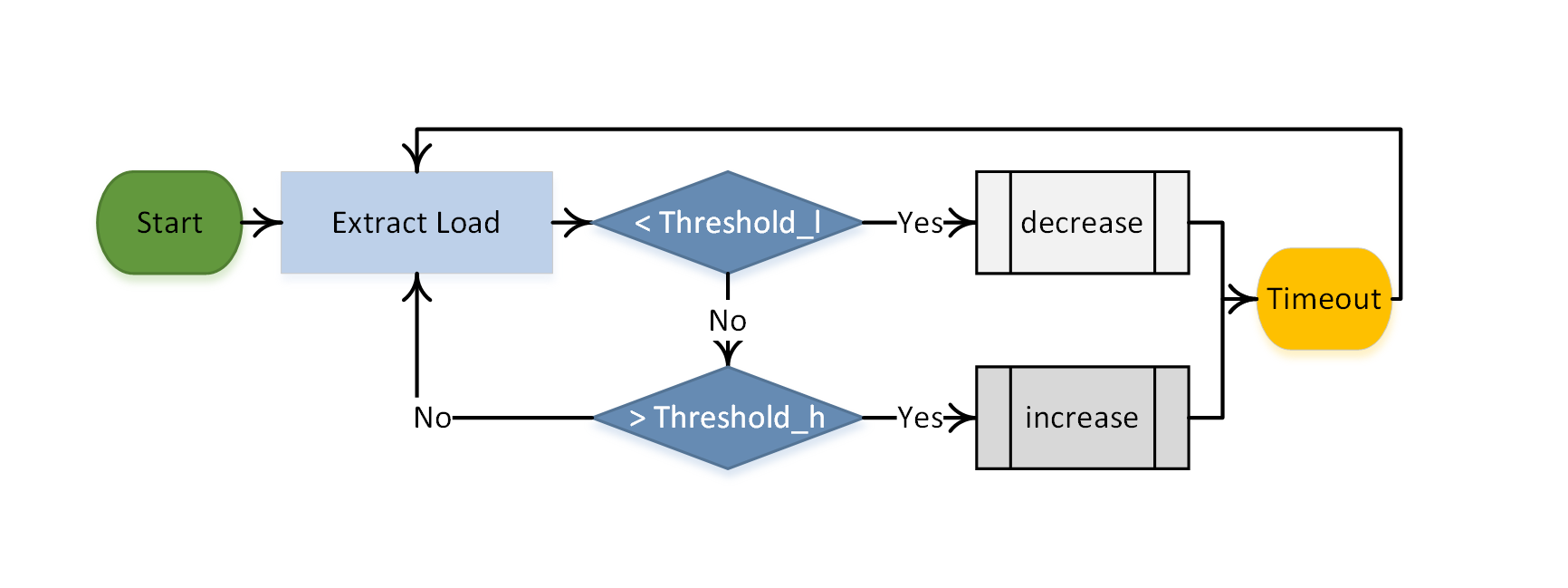NFV Orchestration Platform using Docker Swarm
Multiple services with heterogeneous characteristics are anticipated with fifth generation of mobile communications (5G).
Each requires an infrastructure tuned to serve requirements.
To maintain affordability, operators will provide these services over a common infrastructure segmented into different network slices. A slice is a logical network built using Virtualized Network Functions (VNFs) that are enabled by leveraging Network Function Virtualization (NFV) and Software-Defined Networking (SDN).
Orchestration is key for saving costs when tailoring infrastructures due to scarcity of resources.
In this demo, we present an on-the-fly provisioned infrastructure used to implement 5G Core Network (CN) as a Service (CNaaS).
Our platform is designed for high-availability with self-healing capability. It uses Docker Swarm as an orchestrator and OpenAirInterface (OAI) for virtualizing the CN. We demonstrate resiliency, effortless on-demand scaling and orchestrated autoscaling using bin-packing or spreading strategies for achieving elasticity.
Description:
In our SDR Lab, we work with microservices implemented as Docker Containers. This enables us to provision on the fly Virtualized Network Functions (VNFs). In order to comply with software quality pillars, namely the high-availability objective, we use multiple docker machines.
We use OpenAirInterface-Core Network (OAI-CN) to implement 4G EPC composed of Mobility Management Entity (MME), Home Subscriber Server (HSS), Serving Gateway (SGw) and Packet Gateway (PGw).
Same applies to 5G Core (5GC).
Detailed architecture of our orchestration platform is depicted below.

To provide agility in answering increased demandes on resources, we use an Autoscaling algorithm that periodically extracts load of running microservices and adapts allocated resources accordingly.
Autoscaling Flowchart is depicted below. We implemented two strategies for orchestrating the deployment of microservices.
They are: Bin-packing and Spread.

To maintain affordability, operators will provide these services over a common infrastructure segmented into different network slices. A slice is a logical network built using Virtualized Network Functions (VNFs) that are enabled by leveraging Network Function Virtualization (NFV) and Software-Defined Networking (SDN).
Orchestration is key for saving costs when tailoring infrastructures due to scarcity of resources.
In this demo, we present an on-the-fly provisioned infrastructure used to implement 5G Core Network (CN) as a Service (CNaaS).
Our platform is designed for high-availability with self-healing capability. It uses Docker Swarm as an orchestrator and OpenAirInterface (OAI) for virtualizing the CN. We demonstrate resiliency, effortless on-demand scaling and orchestrated autoscaling using bin-packing or spreading strategies for achieving elasticity.
Description:
In our SDR Lab, we work with microservices implemented as Docker Containers. This enables us to provision on the fly Virtualized Network Functions (VNFs). In order to comply with software quality pillars, namely the high-availability objective, we use multiple docker machines.
We use OpenAirInterface-Core Network (OAI-CN) to implement 4G EPC composed of Mobility Management Entity (MME), Home Subscriber Server (HSS), Serving Gateway (SGw) and Packet Gateway (PGw).
Same applies to 5G Core (5GC).
Detailed architecture of our orchestration platform is depicted below.

To provide agility in answering increased demandes on resources, we use an Autoscaling algorithm that periodically extracts load of running microservices and adapts allocated resources accordingly.
Autoscaling Flowchart is depicted below. We implemented two strategies for orchestrating the deployment of microservices.
They are: Bin-packing and Spread.

REFERENCES
[1] D Lund et al. "Worldwide and regional IoT-2020 forecast" AT&T, 2014
[2] N. Salhab et al, "Optimization of the Implementation of Network Slicing in 5G RAN", IEEE MENACOMM 2018
[3] Microsoft Azure, Cloud Application Architecture Guide E-Book, 2017
[4] P. Marsh et al, 5G System Design - Architectural and Functional Considerations, Wiley, 2018
[5] Eurecom, "OpenAirInterface", Online: openairinterface.org/, Jul. 2015
[6] DOCKER, Enterprise Container Platform, Online: docker.com
[7] HAProxy, Reliable TCP/HTTP Load Balancer, Online: haproxy.org
[8] NGINX, Load Balancer & Reverse proxy, Online: nginx.org
[9] Boot2Docker, lightweight Linux for Docker, Online: boot2docker.io
[10] NFV Orchestration Platform, Online: sdr-lab.u-pem.fr/NFVOPLT.html
